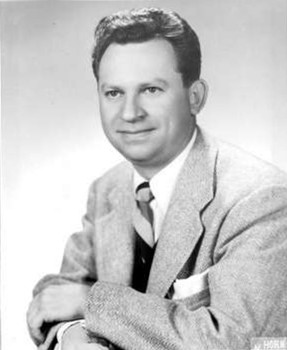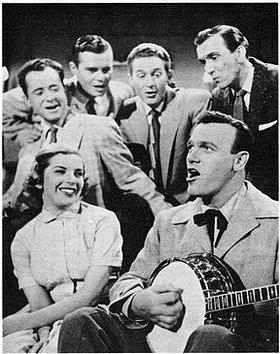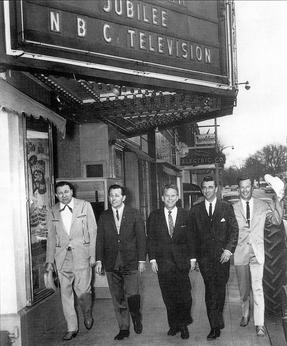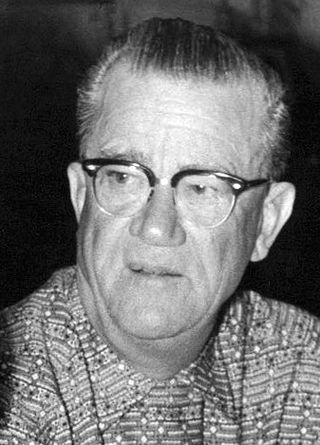Related Research Articles

Law & Order: Special Victims Unit is an American police procedural crime drama television series created by Dick Wolf for NBC. The first spin-off of Law & Order, it stars Mariska Hargitay as Detective Olivia Benson, now the commanding officer of the Special Victims Unit after originally having been Stabler's partner in a fictionalized version of the New York City Police Department, and Christopher Meloni as Detective Elliot Stabler. Law & Order: Special Victims Unit follows the detectives of the Special Victims Unit as they investigate and prosecute sexually based crimes. Some of the episodes are loosely based on real crimes that have received media attention.

20/20 (stylized as 2020) is an American television newsmagazine that has been broadcast on ABC since June 6, 1978. Created by ABC News executive Roone Arledge, the program was designed similarly to CBS's 60 Minutes in that it features in-depth story packages, although it focuses more on human interest stories than international and political subjects. The program's name derives from the "20/20" measurement of visual acuity.

The Arthur Murray Party is an American television variety show that ran from July 1950 until September 1960. The show was hosted by dancers Arthur and Kathryn Murray, the show featured various acts and celebrity guests and acted as advertisement for their chain of dance studios. Each week, the couple performed a mystery dance, and the viewer who correctly identified the dance would receive two free lessons at a local studio.
Ozark Jubilee is a 1950s American television program that featured country music's top stars of the day. It was produced in Springfield, Missouri. The weekly live stage show premiered on ABC-TV on January 22, 1955, was renamed Country Music Jubilee on July 6, 1957, and was finally named Jubilee USA on August 2, 1958. Originating "from the heart of the Ozarks", the Saturday night variety series helped popularize country music in America's cities and suburbs, drawing more than nine million viewers. The ABC Radio version was heard by millions more starting in August 1954.

The Jimmy Dean Show is the name of several similar music and variety series on American local and network television between 1963 and 1975. Each starred country music singer Jimmy Dean as host.

Must See TV was an American advertising slogan that was used by NBC to brand its primetime blocks during the 1990s, and most often applied to the network's Thursday night lineup, which featured some of its most popular sitcoms and drama series of the period, allowing the network to dominate prime time ratings on Thursday nights in the 1980s and 1990s. Ratings for NBC's lineup fell during the mid-to-late 2000s, and today the network ranks behind Fox, ABC, and CBS on Thursday nights. In 2015 and again in 2021, the network canceled comedy programming on Thursdays and switched entirely to dramas. However, the branding returned for the 2017–18 television season.
The following is the 1957–58 network television schedule for the four major English language commercial broadcast networks in the United States. The schedule covers primetime hours from September 1957 through March 1958. The schedule is followed by a list per network of returning series, new series, and series cancelled after the 1956–57 season.
The 1955–56 network television schedule for the four major English language commercial broadcast networks in the United States. The schedule covers primetime hours from September 1955 through March 1956. The schedule is followed by a list per network of returning series, new series, and series cancelled after the 1954–55 season.

Ford Star Jubilee is an American anthology series that originally aired monthly on Saturday nights on CBS at 9:30 P.M., E.S.T. from September 24, 1955, to November 3, 1956,. The series was approximately 90 minutes long, broadcast in black-and-white and color, and was typically telecast live. Ford Star Jubilee was sponsored by the Ford Motor Company.

Ford Theatre, spelled Ford Theater for the original radio version and known, in full, as The Ford Television Theatre for the TV version, is a radio and television anthology series broadcast in the United States in the 1940s and 1950s. At various times the television series appeared on all three major television networks, while the radio version was broadcast on two separate networks and on two separate coasts. Ford Theatre was named for its sponsor, the Ford Motor Company, which had an earlier success with its concert music series, The Ford Sunday Evening Hour (1934–42).
The Dinah Shore Show is an American variety show which was broadcast by NBC from November 1951 to July 1957, sponsored by General Motors' Chevrolet division. For most of the program's run, it aired from 7:30 to 7:45 Eastern Time on Tuesday and Thursday nights, rounding out the time slot which featured the network's regular evening newscast, which, like all such programs of the era, was then only 15 minutes in length.

The Danny Kaye Show is an American variety show, hosted by the stage and screen star Danny Kaye, which aired on Wednesday nights from September 25, 1963, to June 7, 1967, on the CBS television network. Directed by Robert Scheerer, it premiered in black-and-white. It switched to color broadcasts in the fall of 1965. At the time, Kaye was at the height of his popularity. He starred in a string of successful 1940s and 1950s musical comedy features, made numerous personal appearances at venues such as the London Palladium, and his rare selective visits to the small screen were considered major events. With his recent motion pictures considered disappointments, three triumphant early 1960s television specials led the way to this series. Prior to his film and television career, Kaye had made a name for himself with his own radio show, also titled The Danny Kaye Show. He made numerous guest appearances on other comedy and variety radio shows and headlined in several major Broadway musical revues throughout the 1940s.
Down You Go is an American television game show originally broadcast on the DuMont Television Network. The Emmy Award-nominated series ran from 1951 to 1956 as a prime time series primarily hosted by Dr. Bergen Evans. The program aired in eleven different timeslots during its five-year run.

Si Siman was an American country music executive as a radio producer, talent agent, songwriter, record producer, television producer and music publisher who helped transform the sound of music in the Ozarks after World War II and into the 1980s. He discovered Country Music Hall of Fame Members Chet Atkins and Porter Wagoner, and secured record deals for The Browns and Brenda Lee among others; and was the key figure behind Ozark Jubilee, the first network television series to feature America's top country music stars. According to the Encyclopedia of Country Music, he was "the driving force in the emergence of Springfield, Missouri, as a country music center in the 1950s."

Eddy Arnold Time is an American musical television series syndicated to local stations from 1955 through 1957. The show consisted of 26 half-hour filmed episodes starring Eddy Arnold in different roles within a musical narrative. Arnold portrayed, among others, a lumberjack, a traveling salesman, a cowboy, a pet shop owner, himself, and even Stephen Foster.

Five Star Jubilee is an American country music variety show carried by NBC-TV from March 17–September 22, 1961. The live program, a spin-off of ABC-TV's Jubilee USA, was the first network color television series to originate outside New York City or Hollywood.

Ralph David Foster was an American broadcasting executive and philanthropist who created the framework for Springfield, Missouri, to challenge Nashville, Tennessee, as the nation's country music capital during the 1950s. His KWTO was a stepping-stone for many top country artists; and with his music businesses, led to creation of Ozark Jubilee, the first U.S. network television program to feature country's top stars.
This Is Show Business is an American variety television program that was broadcast first on CBS and later on NBC beginning July 15, 1949, and ending September 11, 1956. It was CBS-TV's first regular series broadcast live from coast to coast. It was originally titled This Is Broadway.
Saturday Night Review is a live American variety television series that was broadcast on NBC in 1953 and 1954 as a summer replacement for Your Show of Shows.
References
- ↑ Streissguth, Michael (1997). Eddy Arnold: Pioneer of the Nashville Sound. New York: Schirmer Books. ISBN 0-02-864719-X.
- 1 2 3 4 "The Eddy Arnold Show". Variety. July 15, 1953. p. 30. Retrieved October 28, 2023.
- ↑ "The Spectator" (May 6, 1956), Springfield News & Leader , p. B6
- ↑ Sachs, Bill "Folk Talent and Tunes" (September 8, 1956), The Billboard, p. 55
- ↑ Weekly program listings (1956), TV Guide , Vol. 4